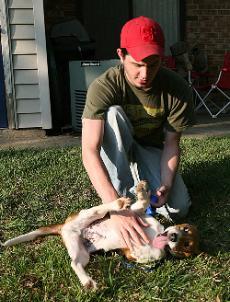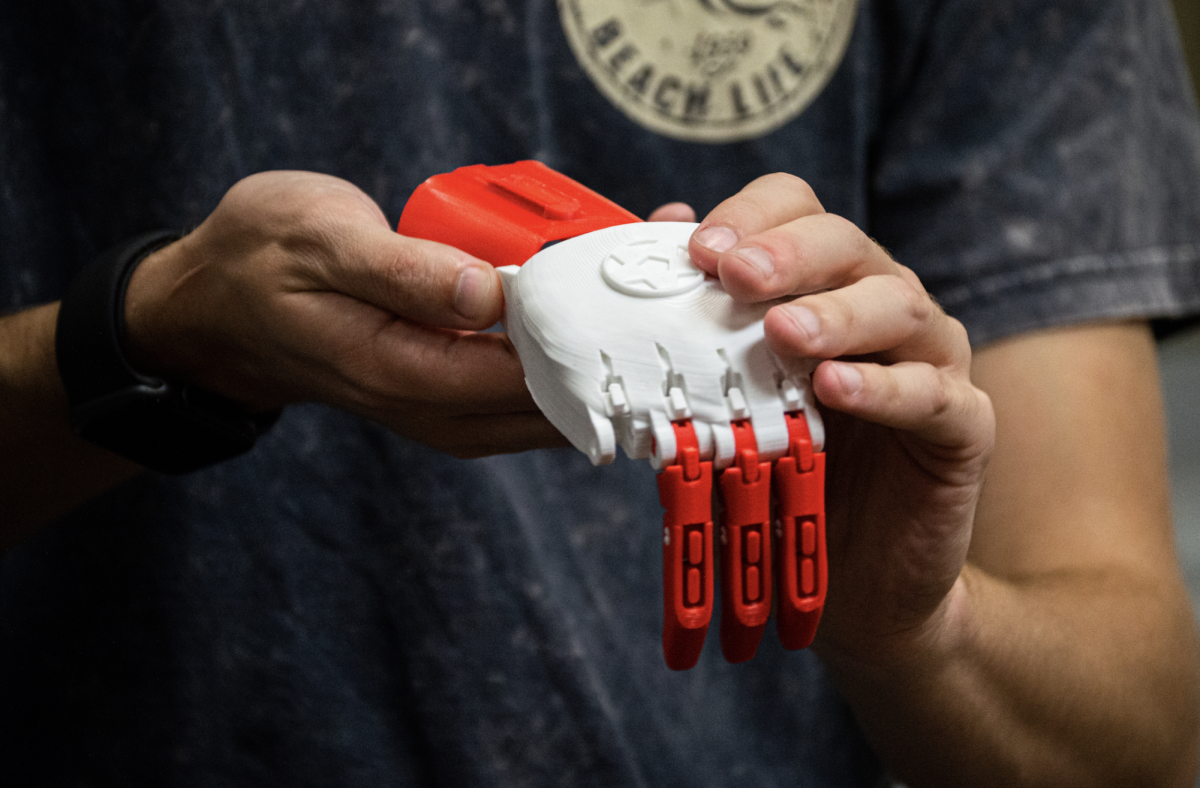David’s knee hurt. It hurt bad. It hurt like his “knee had been hit with a baseball bat.”
The sharp pain of the osteosacroma, or bone cancer, shot up and down David Shaffer’s leg. It would wake him up in the middle of the night. And during the summer of 1999, when he was 14, a month of playing hockey in that extreme pain was the reason he went to his family doctor.
A week later he had already been admitted to the Carolinas Medical Center in Charlotte and had surgery.
“After my first X-ray they knew it was cancer,” Shaffer, a senior in industrial engineering, said. “They started treatment and I had lung surgery to remove a lymph node.”
Shaffer’s bone cancer had already begun to spread, and his chance of surviving was in the teens.
“And there was an even higher percent of losing my leg,” he said.
But the doctors never called it cancer; they just referred to it as a tumor.
“I was sitting in a hospital meeting room with both my parents and the doctor that was going to be treating me,” he said. “It was scary.”
Osteosarcoma is a type of Sarcoma, which is a solid tumor derived from embryonic mesoderm tissue, according to Wendell McKenzie, professor of genetics. Sarcomas account for 1.9 percent of all cancers.
Shaffer’s cancer was located on his right femur, and the pressure from the tumor pressing down on his kneecap caused his pain.
“As soon as they found out what it was they put me on crutches,” he said. “Because the tumor was taking away my bone mass and it would have broken easily.”
The treatment came in cycles. Three weeks on a treatment, three weeks off a treatment. The chemotherapy rotated between three and five-day hospital stays.
The chemo entered Shaffer’s body through a catheter in his chest that connected directly to his jugular vein. It made him lose his hair and he remained continuously nauseas.
“Chemo made me throw up every day, even when I was off the treatment, at least once a day from August to May,” he said. “”They give you antinausea medicine but you could only get it so often. There were drugs they could give you to calm you down – but it didn’t help that much, you would still feel extremely sick.”
After a few months and cycles of chemo, on Dec. 2, 1999 Shaffer went into surgery to remove the tumor and most of his femur. He woke up later in the Intensive Care Unit.
During his stay at the hospital Shaffer’s mother had kept two black and white composition notebooks, and months after his first surgery he flipped through the books and found that on Dec. 2 he was in cardiac arrest for 10 minutes.
“I woke up in ICU and the anesthesiologist had told my parents that if I came out of the coma I would be brain dead,” he said.
He made it through with no brain damage, but the surgery had to be repeated. So on Dec. 20, 1999 Shaffer went back in to surgery to have the emergency prosthetic they had inserted replaced with cobalt aluminum one.
“I still have my kneecap, the very bop of the ball socket to my hip, I still have my lower leg bones, and there is a plate and a couple of screws to hold it in,” he said.
And he managed to keep his leg.
At CMC, where Shaffer was treated, another patient, the same age with the exact same problem, did not keep his leg. It made him realize how lucky he is to still have his leg.
His final treatment took place in June of 2000, and then he went with his family on a hockey cruise funded by the Make-a-Wish Foundation. When he went back to high school in the fall he still hadn’t regrown his hair from the chemo.
He has been in remission now for almost seven years.
“If I meet somebody I’m not like ‘hey, I’m David, I had cancer,'” he said. “I’m not going to go out of my way to dump all the information on the table, but yeah it does define me.”





